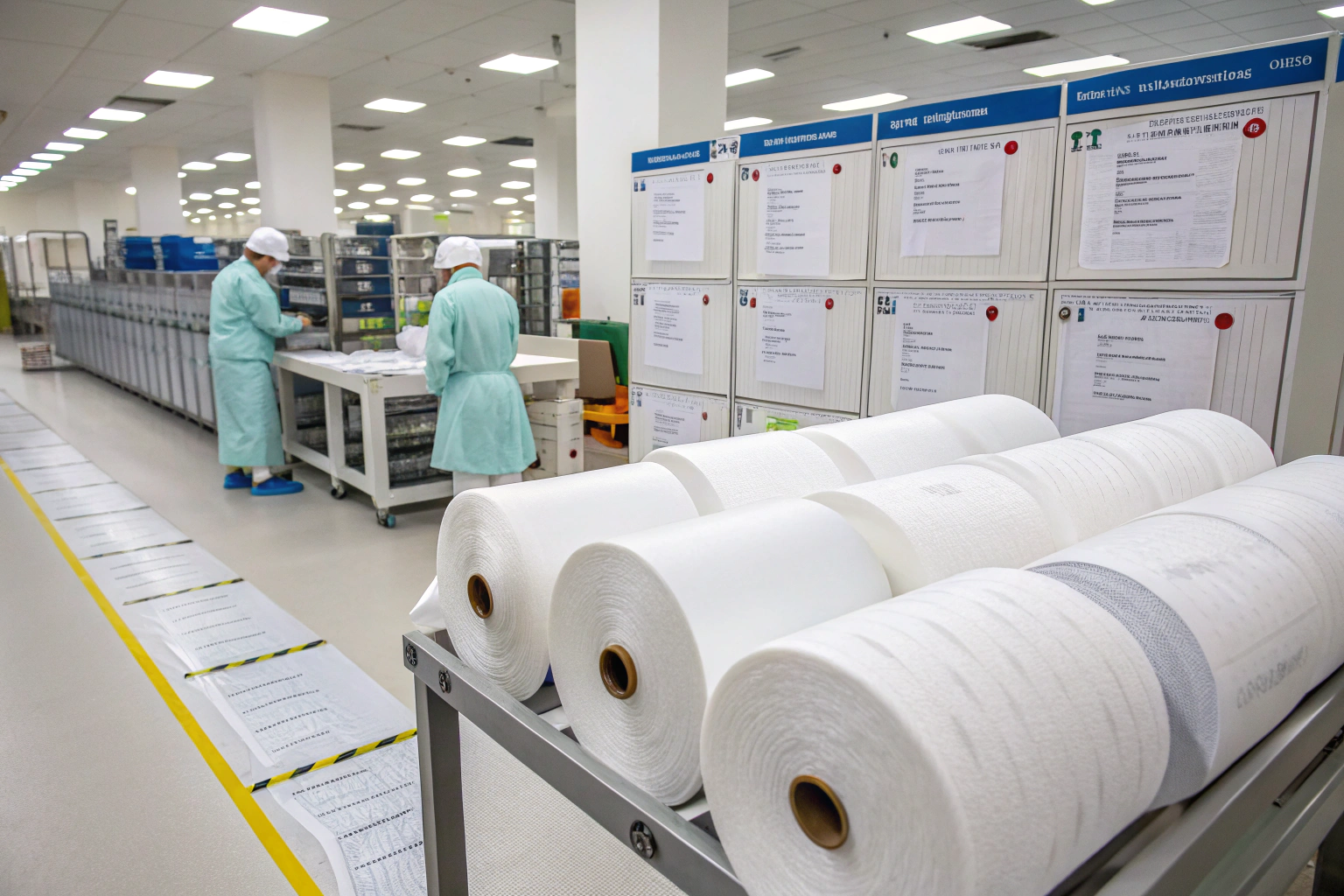Hospitals, clinics, and wound-care brands around the world are urgently upgrading to antibacterial gauze fabrics—especially those treated with silver ion (Ag⁺) technology. In an age of antibiotic resistance and strict hygiene protocols, silver-infused medical gauze offers a proven solution for infection prevention.
Antibacterial silver ion medical gauze fabric is used in dressings, surgical pads, and wound-contact textiles to provide long-lasting, broad-spectrum antimicrobial protection.
If you're sourcing for healthcare, OEM dressings, or sterile packaging, finding the right silver ion gauze supplier is critical. This guide shows you what to look for, how it works, and where to source high-quality material.
What Makes Silver Ion Effective for Antibacterial Fabric?
Silver ions (Ag⁺) are positively charged particles that attach to microbial cell membranes, disrupt cellular respiration, and prevent DNA replication. Unlike antibiotics, bacteria don’t easily develop resistance to silver.
Silver ion technology offers continuous antimicrobial activity—killing 99.9% of bacteria, fungi, and some viruses on contact.
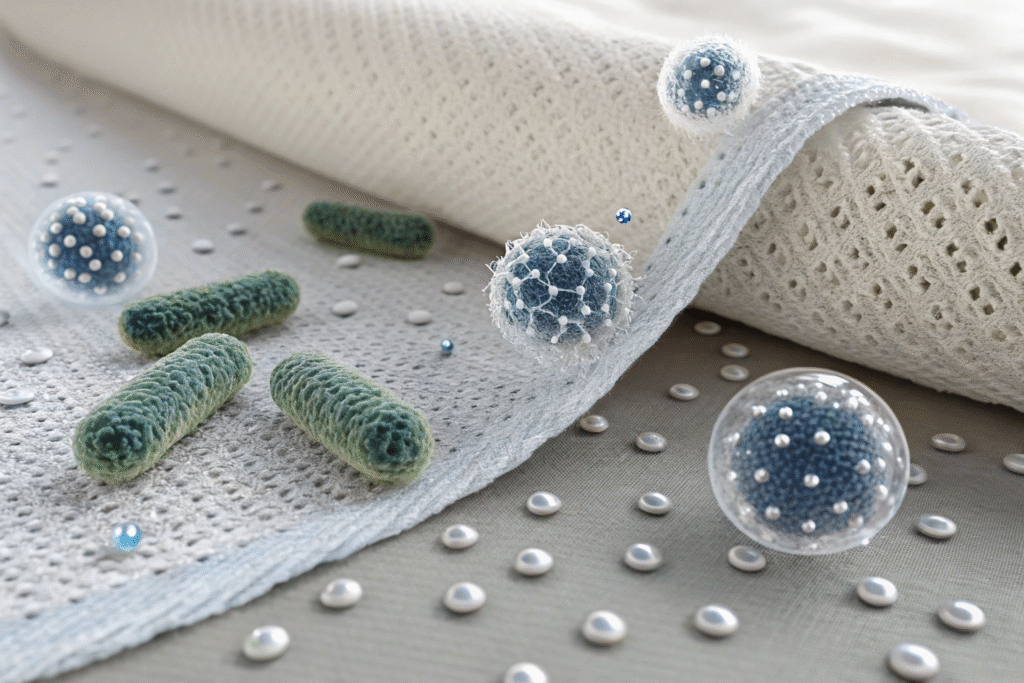
How Does Silver Compare to Other Antimicrobial Agents?
| Agent | Mode of Action | Residual Effect | Resistance Risk | Use in Medical Textiles |
|---|---|---|---|---|
| Silver Ion | Ion exchange / DNA block | Long-lasting | Low | Widely used |
| Zinc Oxide | Oxidative stress | Medium | Low | Limited |
| Copper | Membrane disruption | Medium | Low–Moderate | Surface coatings |
| Triclosan | Enzyme inhibitor | Short | High | Banned in many countries |
Explore SciTechDaily's explanation or Nature’s microbiology journals for deeper insight.
Is Silver Safe on Human Skin?
Yes. Medical-grade silver ion concentrations are non-toxic, hypoallergenic, and biocompatible. They’ve been used in wound dressings for decades.
More clinical validation is available at PubMed and NIH wound care reviews.
What Standards Should Silver Gauze Meet?
High-quality silver ion gauze must meet both biocompatibility and antimicrobial efficacy standards. The textile itself must also pass sterility and absorption benchmarks.
Key certifications include ISO 10993 for skin safety, EN 13795 for surgical textiles, and ASTM E2149 for antimicrobial performance.
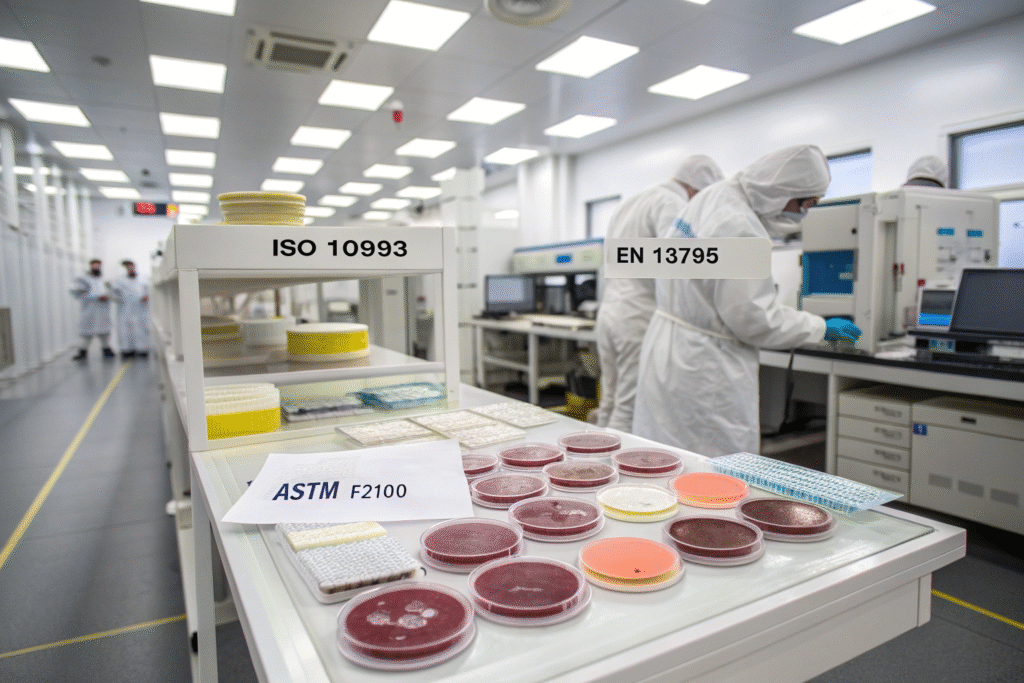
Which Standards Should You Look For?
- ISO 10993 – Biological evaluation of medical devices (cytotoxicity, irritation, sensitization)
- EN 13795 – Barrier performance and particle cleanliness for surgical textiles
- ASTM E2149 – Dynamic antimicrobial test against bacteria like Staphylococcus aureus and E. coli
Check more at SGS Medical Textile Testing and Nelson Labs.
Is Sterilization Compatibility Important?
Yes. The gauze must withstand:
- Gamma sterilization
- EO (ethylene oxide) treatment
- Autoclave (121–134°C)
Ask suppliers if their silver coatings remain stable post-sterilization. See sterilization method comparisons at Sterigenics and Baxter Healthcare.
What Base Fabrics Work Best with Silver Ion?
Not all fibers bind silver ions effectively. Silver adheres best to cellulose-based fibers like cotton or viscose, which are commonly used in medical gauze.
100% cotton, bleached gauze, and viscose-rayon blends are preferred substrates for silver ion integration due to their breathability, softness, and skin-compatibility.
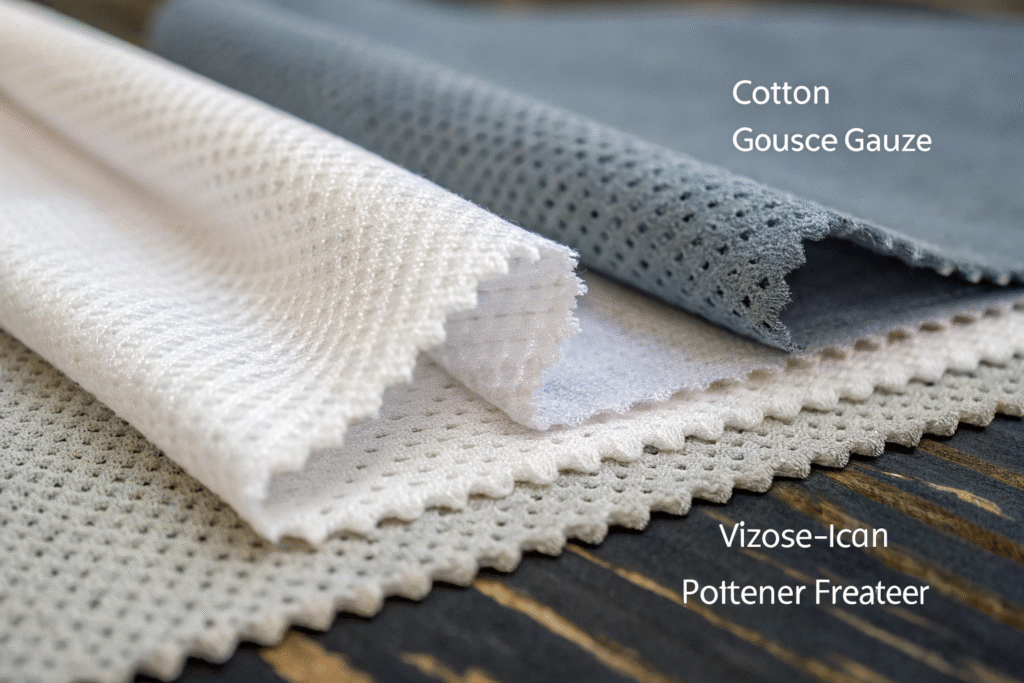
Why Is Cotton the Most Common Base?
Cotton is:
- Highly absorbent
- Breathable
- Biodegradable
- Proven in medical history
Used in formats like plain gauze, crimped gauze, or mesh, cotton supports uniform silver application.
Find base specs on CottonWorks™ and Fibre2Fashion.
Can Silver Be Combined with Synthetic Gauze?
Yes—but only if skin-contact safety is maintained. Silver can be coated onto polyester gauze used in surgical drapes or laminated gauze composites for wound pads.
Learn more from Freudenberg Performance Materials and Ahlstrom-Munksjö medical fabrics.
Where to Source Silver Ion Medical Gauze Fabric?
Global sourcing options for silver-treated medical gauze span across Asia and Europe, with OEM-grade producers offering certified fabrics in roll or pad formats.
Look for suppliers who can offer sterile packaging, lab-tested performance, and international export documentation.
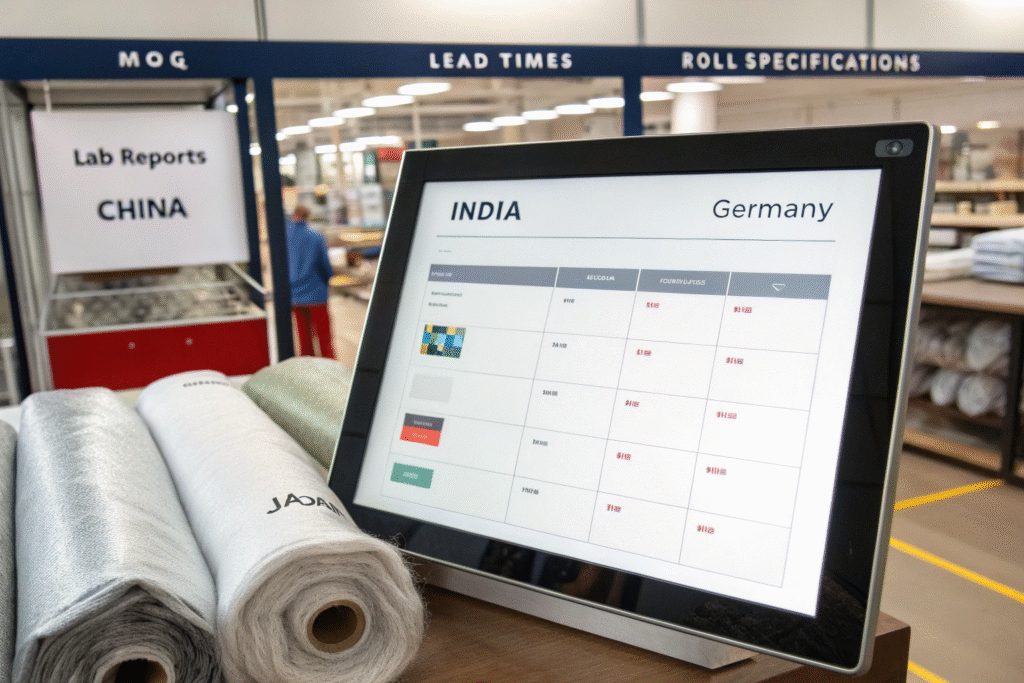
Who Are Top Suppliers of Silver Gauze Fabric?
- China (Keqiao, Jiangsu) – Cost-effective, ISO 13485-certified medical gauze mills
- India (Gujarat, Tamil Nadu) – Cotton-based gauze producers with GOTS options
- Germany (Carl Freudenberg) – High-end coated gauze composites
- Japan (AsahiKASEI Medical) – Technical specialty gauze for wound care
Platforms to explore:
Alibaba – Silver gauze fabric
MedicaTradeFair
Made-in-China Medical Textiles
What to Ask Before Placing an Order?
- What’s the silver ion concentration (ppm)?
- Can you share antibacterial test reports (ASTM, ISO, SGS)?
- What’s the absorption rate and GSM?
- Do you offer EO/gamma-sterilized packaging?
Use inspection services like QIMA or TÜV SÜD for quality validation pre-shipment.
Conclusion
Silver ion medical gauze is not just a premium option—it’s becoming the standard for antibacterial, skin-safe, and hospital-grade wound care textiles. With proven performance, long-term antimicrobial action, and strong global demand, this is a critical fabric for the medical and hygiene supply chain.
At Fumao Fabric, we offer custom silver ion gauze fabric with verified SGS testing, EO/gamma sterilization support, and flexible MOQ options. Whether you need continuous rolls or private-labeled sterile dressings, we help you deliver certified medical-quality material. Contact our Business Director Elaine at elaine@fumaoclothing.com to request samples or quotations.

